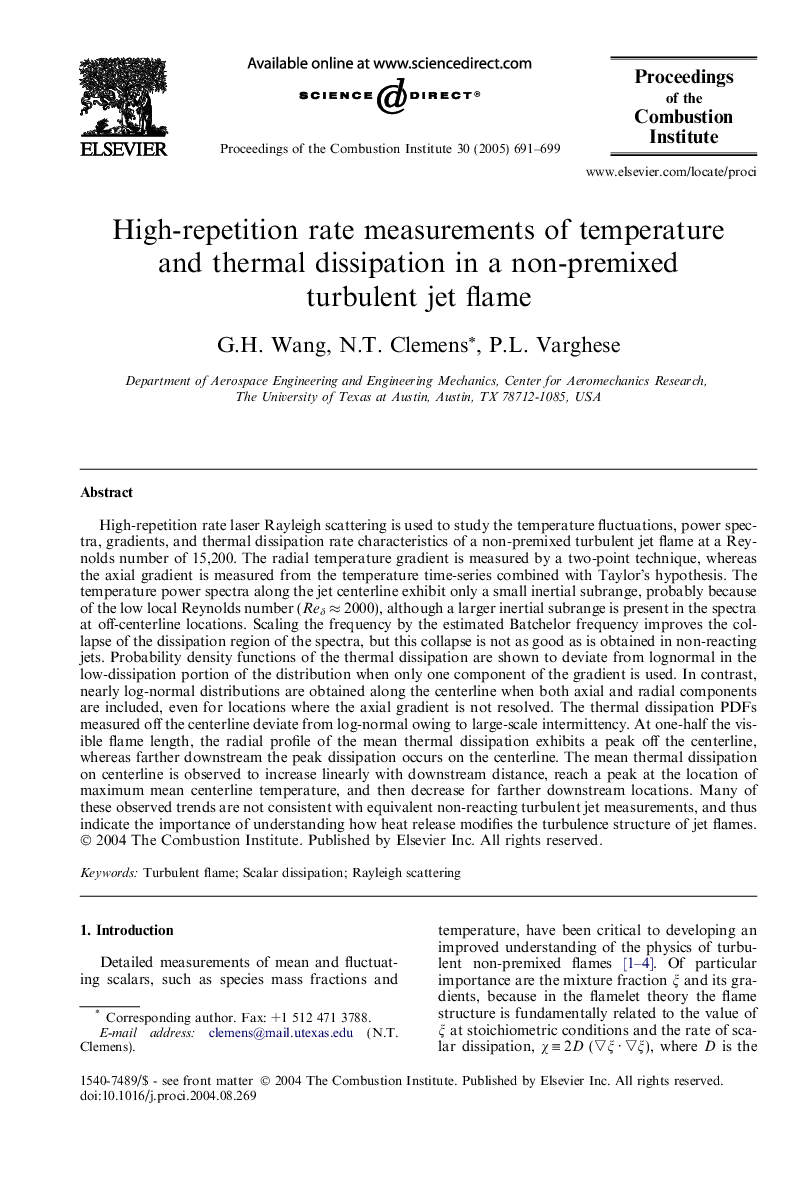| Article ID | Journal | Published Year | Pages | File Type |
|---|---|---|---|---|
| 9637392 | Proceedings of the Combustion Institute | 2005 | 9 Pages |
Abstract
High-repetition rate laser Rayleigh scattering is used to study the temperature fluctuations, power spectra, gradients, and thermal dissipation rate characteristics of a non-premixed turbulent jet flame at a Reynolds number of 15,200. The radial temperature gradient is measured by a two-point technique, whereas the axial gradient is measured from the temperature time-series combined with Taylor's hypothesis. The temperature power spectra along the jet centerline exhibit only a small inertial subrange, probably because of the low local Reynolds number (Reδ â 2000), although a larger inertial subrange is present in the spectra at off-centerline locations. Scaling the frequency by the estimated Batchelor frequency improves the collapse of the dissipation region of the spectra, but this collapse is not as good as is obtained in non-reacting jets. Probability density functions of the thermal dissipation are shown to deviate from lognormal in the low-dissipation portion of the distribution when only one component of the gradient is used. In contrast, nearly log-normal distributions are obtained along the centerline when both axial and radial components are included, even for locations where the axial gradient is not resolved. The thermal dissipation PDFs measured off the centerline deviate from log-normal owing to large-scale intermittency. At one-half the visible flame length, the radial profile of the mean thermal dissipation exhibits a peak off the centerline, whereas farther downstream the peak dissipation occurs on the centerline. The mean thermal dissipation on centerline is observed to increase linearly with downstream distance, reach a peak at the location of maximum mean centerline temperature, and then decrease for farther downstream locations. Many of these observed trends are not consistent with equivalent non-reacting turbulent jet measurements, and thus indicate the importance of understanding how heat release modifies the turbulence structure of jet flames.
Related Topics
Physical Sciences and Engineering
Chemical Engineering
Chemical Engineering (General)
Authors
G.H. Wang, N.T. Clemens, P.L. Varghese,
